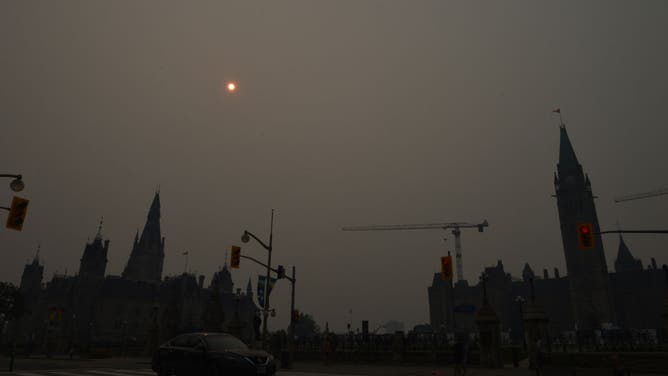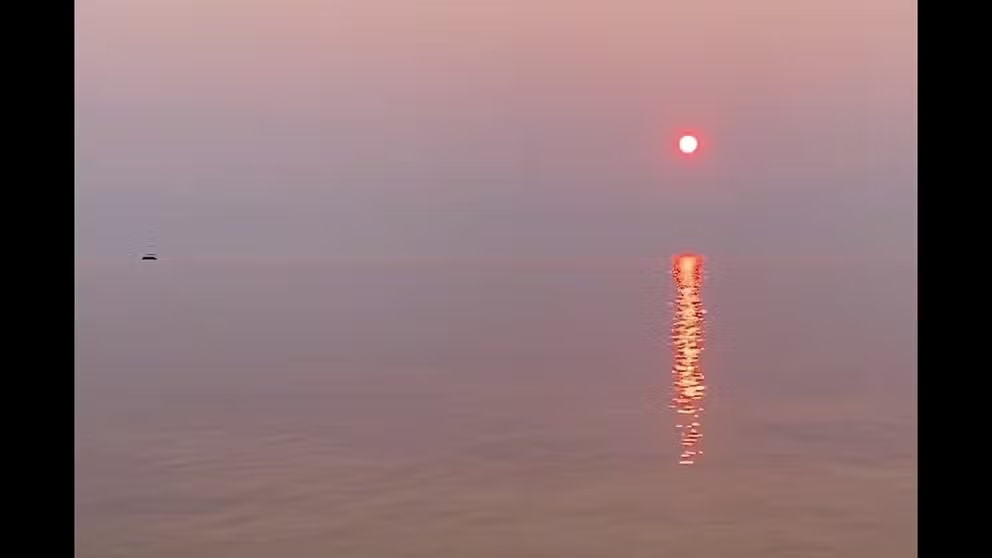Canadian wildfire smoke causing hazy sky as far away as Europe
A haze was visible above northwest Spain as the polar jet stream carried Canadian wildfire smoke across the Atlantic.
What are the health and environmental impacts of wildfire smoke?
Many cities in the eastern U.S. being affected by wildfire smoke from Canada. Paul Walsh, CEO of Meteomatics North America, joins FOX Weather to talk about the impacts of the smoke.
Wildfire smoke engulfing Canada and swooping into the Northern U.S. made its way into Europe this week.
A haze was visible over the northwest Spanish coast in Vigo on Monday as Canadian wildfire smoke driven by the polar jet stream pushed across the Atlantic Ocean.
On Monday, Spain's State Meteorological Agency (AEMET) noted the visible wildfire smoke over southwestern Europe in satellite imagery.
According to the FOX Forecast Center, unlike the smoke the U.S. has been experiencing from the wildfires causing dangerous air quality, most of the smoke arriving in Europe remains lofted at higher altitudes causing hazy skies and colorful sunsets but less air quality concerns.
In recent weeks, European and NOAA satellites have been capturing the wildfire smoke and Saharan Dust plumes, both impacting air quality and the colors of sunrises and sunsets around the world.
Smoke plumes consume Canadian cities

A view of the city as the smoke from forest fires reaching to the center of Ottawa again with the effects of wind, in Canada on June 25, 2023. (Photo by Kadri Mohamed/Anadolu Agency via Getty Images)
(Getty Images)
Canadians are facing some of the worst air quality in the world as shifting winds and weather push the smoke into city centers.
Over the weekend, levels in Ottawa reached "high risk" on the Canadian Air Quality Health Index. The poor air quality was joined by a smoke-tinged sky over Canada's capital city.
In the U.S., the Great Lakes and Upper Midwest regions are receiving the brunt of the wildfire smoke from Canada. Near-surface smoke is creating poor air quality for millions across the U.S.
NOAA's GOES satellite imagery below shows the smoke plumes from Ontario pushing into Wisconsin and Illinois.
Sunsets on Lake Michigan this week have been hazy and fiery because of the smoke particles in the air.
The light-scattering effect of the smoke molecules causes the sky to turn several shades of orange and red.
Wildfire smoke creates hazy sky over Lake Michigan
Canadian wildfire smoke created a hazy red-orange sky over Lake Michigan on June 23 at the Michigan-Huron watershed. Wildfire smoke is causing poor air quality in the Great Lakes this week.
Canada has more than 490 wildfires burning this week amid one of its worst wildfire seasons, which has scorched over 19 million acres.
Hot temperatures and dry conditions have contributed to Canada's unusually active wildfire season, which typically peaks in the summer.




